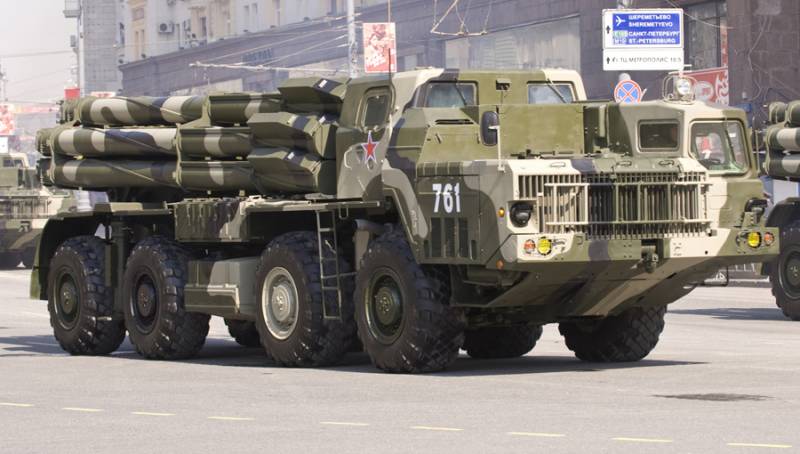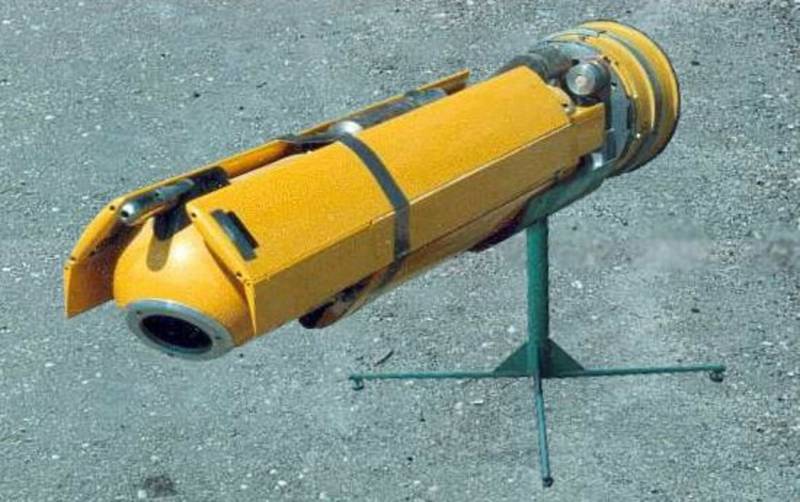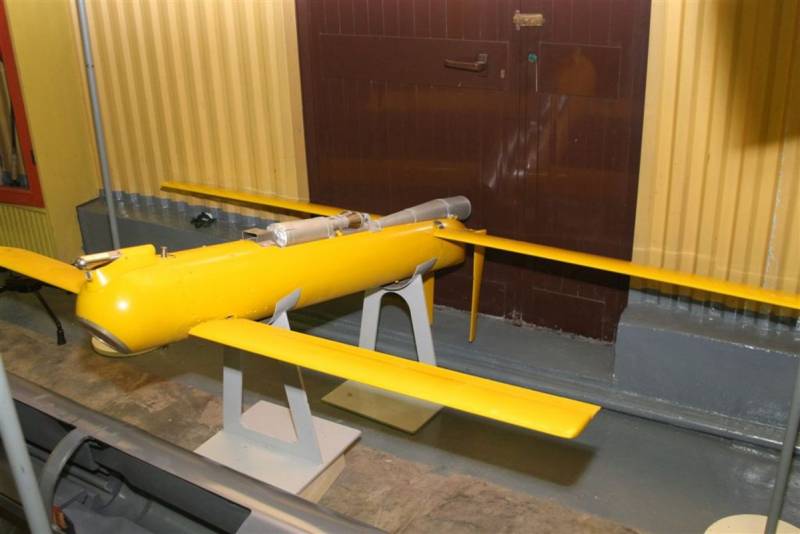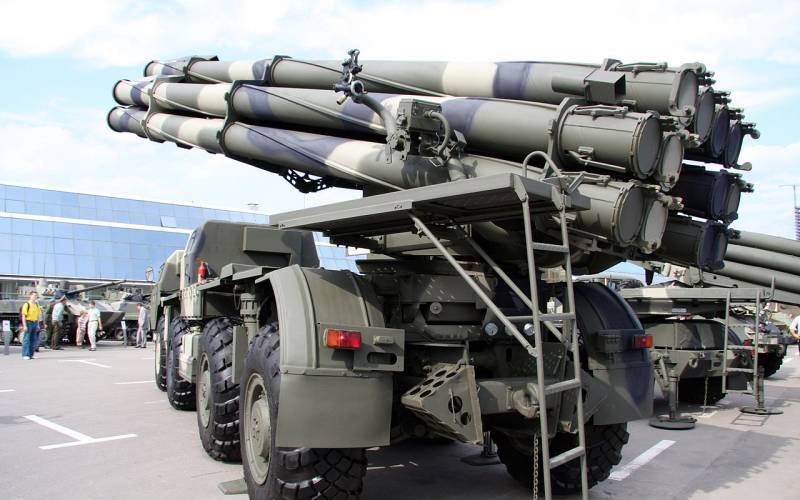A drone for "Tornado". Reconnaissance complex completes testing
It must be recalled that the idea of using a UAV as a missile payload is not new. Such proposals appeared a long time ago, and already in the late nineties, real samples of this kind began to appear at domestic exhibitions. However, not all missile projects with drones on board were able to reach full implementation.
New posts
The current project promising missiles with non-standard equipment was first reported at the end of January 2017. Then the leadership of the Splav Research and Production Association told about the new development. Nikolai Makarovets, General Designer of the enterprise, told the Russian press about the development of a UAV placed in the Smerch 300-mm rocket. It was noted that the idea of such a system appeared quite a long time ago. By that time, part of the necessary work was carried out, with the result that Splav was in anticipation of potential customers.
Last year, some principles of the operation of the new complex were announced. The missile must deliver the drone to a given area, after which it is dropped and begins to solve its own problems. A UAV is able to stay in the air for 25-30 minutes and monitor. The signal from the camera of the device must be transmitted to the operator's console. A UAV with such functions is proposed to be used to conduct reconnaissance, adjust fire and monitor the results of shooting.
For one reason or another, the project of a missile with a UAV from NPO Splav for a long time disappeared from view. New progress reports appeared only in March of this year. This time, the project was told by the management of the concern "Tehmash", which includes the organization-developer. It was alleged that the Russian Ministry of Defense got acquainted with the draft of the new missile, but did not show proper interest in it. At the same time, the original ideas attracted the attention of the Chinese military.
The following messages, also of interest, appeared at the end of September. Then it became known that the project of a rocket with a drone on board passed into the stage of flight tests of prototypes. According to Tehmash, a new project is being developed at NPO Splav together with a certain unnamed foreign customer. The latter presented his technical task to which the finished product should correspond. It did not clarify what kind of foreign country showed interest in the new Russian project and can now become a starting customer for equipment.
On November 27, the latest news on the progress of the new project, NPO Splav, appeared. The press service of the concern "Tehmash" reported that work on the creation of promising products are in the final stages. However, the exact timing of the end of testing and refinement, as well as the start of production and transfer of products to the customer has not yet been named. Also, the starting customer in the person of a certain foreign country, which had previously submitted its own requirements for the project, was not specified.
Shortly after News On the completion of the project, the Zvezda television and radio company published a photograph of a promising UAV proposed for use with the Smerch MLRS. The T90 drone was present in the picture, quite familiar to specialists and amateurs of military equipment. It followed that the project, the materials on which regularly appeared at various exhibitions, finally got a chance to get to operation.
Product T90
Recall, the idea of building a special rocket caliber 300 mm, carrying an unmanned aerial vehicle, appeared in the distant past, and to date has been proposed several options for its practical implementation. Back in the nineties, NPO Splav developed the 9М534 rocket projectile with a cargo hold instead of a full-time combat compartment. Later it was proposed several options for picking such a rocket using one or another UAV.
In the same period, Kazan enterprise “Enix” for the first time showed a small-sized drone called Т90. In the future, this product was being finalized, but its main features remained unchanged. The T90 project provided for the construction of an average aircraft mass, characterized by small dimensions in the transport position. This problem was solved with the help of folding planes of a special construction. The UAV was performed disposable, it was intended for conducting visual reconnaissance in a given area to ensure one or another combat work.
The product T90 had a cylindrical fuselage of high elongation with modified nose and tail parts. Glazing was provided on the bottom of the nose for the camera to work. The device received an unusual plane. Near the nose and tail, the designers placed two pairs of planes unfolded in flight. In the transport position, the elements of the wings were stacked along the fuselage. There were also two ventral keels.
A pulsating jet engine was used as a power plant on the T90. This device was mounted on the top of the fuselage. According to known data, communications and remote control equipment was installed on board the UAV, as well as a video camera for observations during the flight. The control system has been implemented the possibility of autonomous navigation with the correction of the operator commands.
The 9М534 projectile most closely resembled standard ammunition for the Smerch MLRS. It had a length of 7,6 m with a starting mass of 815 kg. The new warhead, containing the drone, had a length of more than 2 m and weight 243 kg. In this case, the UAV itself accounted for only 40 kg. According to past data, the 9М534 projectile could deliver a payload from 25 to 90 km. The 90 could patrol at 500 m for 20 minutes. The maximum flight speed is 100 km / h. The on-board radio equipment provided video signal transmission to the operator from ranges up to 70 km.
The drone Т90 should be sent to the specified area using a jet projectile carrier. At this point, the payload is reset, and the UAV leaves the carrier with a parachute. During descent, the device opens the plane, drops the parachute, goes into horizontal flight and establishes communication with the operator. After that, he can perform the tasks.
The payload of the T90 UAV included a pair of cameras for surveillance at any time of the day. The video signal and telemetry data over the radio channel are transmitted to the operator’s console. The possibility of conducting observation at a considerable distance allowed the complex to solve various problems. With the help of a special projectile with a drone, it was proposed to conduct reconnaissance and search for targets during preparation for a massive strike of rocket artillery. During firing, the T90 could work as a spotter. Also with his help it was proposed to control the results of the shooting. The flight duration at 25-30 minutes allowed one to take part in one or two strokes of the MLRS battery.
A characteristic feature of the complex in the 9М534 and Т90 products was the impossibility of their reuse. So, the drone after the production of fuel had to fall to the ground. His return to the launcher was not envisaged for technical and tactical reasons.
Combat engagement
The 300-mm 9М534 projectile with the T90 drone is intended for use as part of the Smerch MLRS and has the appropriate characteristics. Apparently, the creation of this complex took into account all the main features of military equipment and the possible requirements of the armed forces.
Most of the shells for Smerch have a firing range of up to 70 km, and are also equipped with correction tools that increase accuracy. The T90 UAV is capable of transmitting data from similar distances. Thus, reconnaissance drone can ensure the operation of multiple launch rocket systems for solving all the main tasks in all ranges, up to the maximum.
The task of the reconnaissance complex based on the UAV is to determine the exact coordinates of the target, as well as to control the penetration of missiles. The presence of the aircraft, patrolling over the target, allows you to monitor the results of shooting in real time and make timely amendments to the tip, increasing the efficiency of fire.
Pros, cons and interest of customers
According to recent news, the Russian project of a projectile with an UAV interested only the foreign military, while our army does not intend to purchase such products. The management of NPO "Splav" explained this. The fact is that the structure of the Russian army has already identified structures responsible for the use of unmanned aerial vehicles. In other words, reconnaissance using UAVs is assigned to specific units and units. The introduction of their own unmanned reconnaissance as part of rocket artillery in this case was considered unnecessary.
In addition, the new intelligence complex could find flaws. First of all, the reason for criticism may be the impossibility of re-using the T90 drone and its launch vehicle. Other UAVs with similar functions can be used repeatedly. In addition, the compact unit has limited flight performance. Other drones are not limited by the size of the missile warhead, and therefore can fly faster, farther and higher, and also carry a different payload.
All of this means that the Russian marines, at least in the foreseeable future, will not be able to use drones of the type T90. However, rocket artillery will not remain without the support of reconnaissance aircraft. Our army has a large number of different types of UAVs, and the interaction of such equipment with artillery was repeatedly worked out at exercises. Thus, the army has the necessary means and without the products 9М534 and Т90.
It is obvious that the military of other countries are not obliged to share the opinion of the Russian command. The result is interest in the project from China. The Chinese army is also developing an unmanned direction and is also armed with various intelligence systems of this kind. Nevertheless, she considered that the UAV for the MLRS is of interest and can be entered into service. The result was a collaboration between a foreign customer and a Russian research and production organization.
Preliminary results
Recently it became known that NPO Splav continues flight tests of a new reconnaissance complex designed for work with multiple launch rocket systems, and this part of the project is nearing completion. In the foreseeable future, the appearance of a contract for the supply of serial products is expected. The starting customer will be a certain foreign country, which, apparently, will be China. The volumes of potential supplies and the cost of the future contract, for obvious reasons, remain unknown.
In the context of the rearmament of the Russian army, the situation with the Т90 project does not change. As in the past, our command is not going to supplement the existing MLRS with a specialized intelligence complex, relying on other systems of this kind. In the light of the difference in tactical and technical characteristics, such an approach looks logical and correct, since it allows one to solve assigned tasks without encountering the well-known limitations of the Т90 product.
Thus, a very interesting situation is emerging. The Russian defense industry has once again demonstrated its ability to create various types of weapons and equipment, including fundamentally new ones. At the same time, a new sample of an unusual type turned out to be unnecessary for the Russian army due to the presence of other analogs, but interested foreign customers. Russian development is entering the international market and has every chance to gain a foothold on it. According to the latest news, the T90 UAV completes the tests, and in the near future we should expect new reports about its fate.
On the materials of the sites:
http://tass.ru/
http://rg.ru/
http://tvzvezda.ru/
http://rbase.new-factoria.ru/
http://bastion-karpenko.ru/




Information